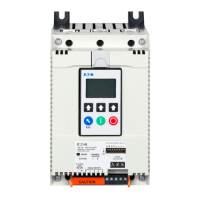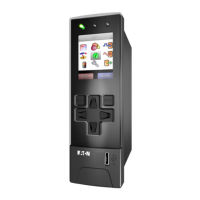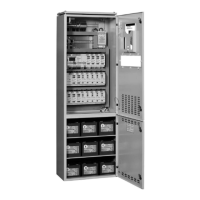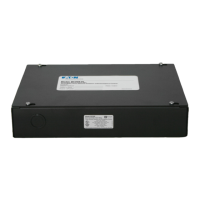Installation
18 S811+ Soft Starter MN03900001E—November 2012
Using Auxiliary Contacts
Often these contacts are used as shown in the illustrations
on this page with indicating lamps. In some installations the
user may wish to use an electromagnetic relay for indication
of the status at a remote location for use by a programmable
controller (PLC), or in a 120 Vac control circuit.
If the S811+ Soft Starter is subject to mechanical shock
during operation, it is possible that these contacts may
momentarily open, causing nuisance fault tripping of down
stream devices. When used with an indicating lamp, a
momentary contact opening would not be observed. In order
to assure proper application, it is suggested that the
following recommendations be implemented:
PLC Interface—It is suggested that a 20 ms delay be
programmed to assure the contact status before a change of
status is indicated. The application and the environmental
issues will determine the exact requirements.
120 Vac Signal Control—When a relay is used in
conjunction with an electronic control, it is highly
recommended that a noise suppressor be used across the
relay coil. In the case of an AC coil, the noise suppressor is
made up of a series connected resistor and capacitor as
shown in the figure below. Usually the delay in the relay
opening is very small, so if the system is subject to shock, a
delay should be added in the external control before the
contact change of state is recognized. The resistor is rated
100 ohms at 0.5 watts. The capacitor is 0.25 μF at 250 Vac.
120 Vac Control
24 Vdc Signal Control—When a relay is used in conjunction
with an electronic control, it is highly recommended that a
noise suppression/snubber diode be placed across the relay
coil as shown below. This diode offers two benefits. First,
the suppression of any electrical noise generated when the
relay coil is de-energized. Second, the diode delays the
opening of the relay slightly as it dissipates the energy stored
in the relay coil. This delay is often long enough to
compensate for the potential effects of a mechanical shock
opening the control contact. A typical suppression diode is a
1N4001.
24 Vdc Control
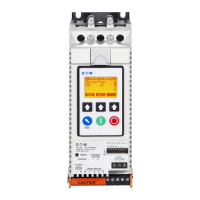
